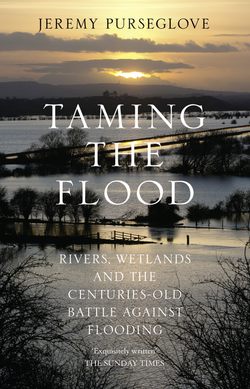Читать книгу Taming the Flood: Rivers, Wetlands and the Centuries-Old Battle Against Flooding - Jeremy Purseglove - Страница 17
CHAPTER 3 THE WINNING OF THE WATERS A History of the Fight against Flooding until the Post-War Era
ОглавлениеToday, land-drainage operations are administered from tower blocks, with the aid of computers in the office and sophisticated machinery on the river bank. It all seems a peculiarly modern phenomenon. In fact, the technocrats of land drainage are heirs to one of the oldest forms of organized local government. In 1252 the ‘jurats’ of Romney Marsh are recorded as having had the power to repair the sea wall and to control the ditches ‘from time out of mind’.1 Similarly, organized bodies of people walked the marshes of the Thames, setting out in the early morning mist to assess the repairs required, which were paid for by a charge known as ‘wallscot’ or ‘scottage’. Those who escaped these earliest of water-rates could be deemed to have got off ‘scot free’. In the Domesday Book, our first named drainage specialist makes his appearance. He lived on the Somerset Levels, and was called Girard Fossarius, Gerard of the Drain.
The people of the Middle Ages inherited sea walls and drainage channels which had survived from the Roman occupation. The Romans had gained expertise in flood alleviation and in irrigation projects from the Greeks and the Etruscans before them. They industriously developed these skills throughout Europe, and were quick to export them to their colonies.2 The emperor Hadrian is commemorated in Britain not only by the engineering achievement of his famous wall, but also by the Car dyke, a catch-water drain encircling the western edge of the Fens, linking the river Cam at Waterbeach with the Witham near Lincoln.3 On the Medway estuary in Kent, raised banks built by the Romans to keep out the sea lasted substantially until the eighteenth century,4 and the extent of Roman reclamation appears to have been formidable. The military and political decline of the Roman Empire coincided with a worsening of the climate, and both contributed to a rising of the swamps in the Dark Ages. This must have reinforced the terror of such places, as portrayed in ‘Beowulf’ and the chronicles relating to St Guthlac. Nonetheless, settlement persisted in some of the wetlands. The priest Rumen, or Romanus, who was chaplain to King Oswy’s wife in the seventh century, probably gave his name to Romney Marsh, large areas of which he owned and may have farmed. Charters of 875 and 972 concerning Longdon Marsh in Worcestershire give a picture of clearing and enclosure among streams and marshes, including a duck pond ‘on ducan seathe’, traces of which still survive under the M50 motorway.5 Piecemeal drainage and reclamation in the Cambridgeshire fens, carried out by Saxon farmers around Wisbech and Ely, have been traced through the detective work of archaeologists, using aerial photography and careful analysis of the evidence on the ground.6
